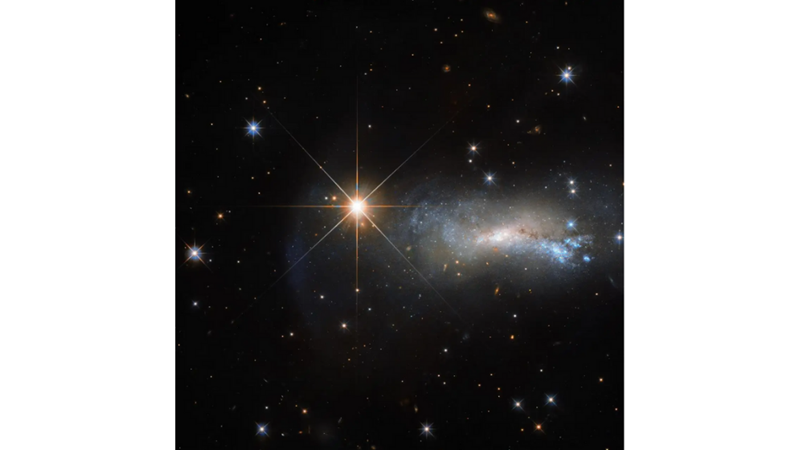The NASA Hubble space telescope, which photographed the galaxy NGC 7250, also witnessed the momentary rise of a star - a single star that caught the eye.
Both the star and the galaxy are located in the constellation Lacerta, but this star is a million times closer than the galaxy, which is 45 million light years away. This relative closeness is the only reason why one star can outshine an entire galaxy containing billions of stars.
This star is what astronomers call a "foreground star" and can be a bit of a nuisance. Its light can distort the faint light from more distant objects that astronomers want to study.
However, foreground stars are not always a problem. In a technique called microlensing, the gravitational effect of a foreground star can be used to amplify the light of a background star aligned with it. The exact timing and amount of this light amplification can give clues about the nature of the foreground star and its associated planets.
Image description:
In the middle of a background of galaxies, slightly left of centre, a star shines with a white-yellow light. The star has eight long spikes, imaging artefacts known as diffraction spikes. To the right of the star is a galaxy; clouds of gas and dust can be seen along with the stars. Part of the galaxy glows with a bluish light. Other galaxies and stars can be seen dot by dot against the dark background of space.


 Nielawore
Nielawore









Yorumlar
lovely view
cool view
Yorum yazmak için lütfen giriş yapınız